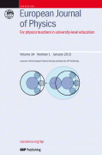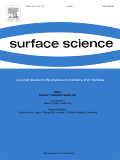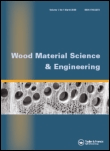
Journal of Physical Science
Scope & Guideline
Empowering the scientific community with cutting-edge discoveries.
Introduction
Aims and Scopes
- Materials Science and Nanotechnology:
Research on the synthesis, characterization, and application of materials at the nano-scale, including the development of nanocomposites, nanoparticles, and their uses in various fields such as electronics, sensing, and environmental remediation. - Environmental Science and Pollution Control:
Studies addressing environmental issues, including the assessment of pollutants, degradation of harmful substances, and the development of materials for environmental protection, such as membranes for gas separation and metal ion sensors. - Physical Chemistry and Chemical Kinetics:
Investigation of chemical reactions, kinetics, and thermodynamic properties, often utilizing experimental and computational methods to understand reaction mechanisms and material behaviors at the molecular level. - Optoelectronics and Photonics:
Research focusing on the optical properties of materials and their applications in devices such as sensors, LEDs, and solar cells, including the study of photonic materials and their functionalities. - Thermal and Mechanical Properties of Materials:
Analysis of heat transfer, mechanical behavior, and structural properties of various materials, including polymers, composites, and metals, contributing to the understanding of material performance in practical applications.
Trending and Emerging
- Green and Sustainable Chemistry:
There is a notable rise in research focusing on green synthesis methods and sustainable practices, such as using natural extracts for nanoparticle synthesis, which aligns with global sustainability goals and environmental awareness. - Advanced Material Characterization Techniques:
Emerging studies are increasingly utilizing sophisticated characterization methods, including advanced spectroscopies and microscopy techniques, to analyze material properties in greater detail, contributing to the development of high-performance materials. - Interdisciplinary Approaches to Problem Solving:
Research that combines principles from different scientific disciplines is gaining traction, highlighting the importance of interdisciplinary collaboration in addressing complex scientific and engineering challenges. - Nanomaterials for Biomedical Applications:
There is a growing emphasis on the application of nanomaterials in biomedicine, including drug delivery systems and biosensors, reflecting an increasing intersection between materials science and healthcare. - Energy Storage and Conversion Technologies:
Research focused on innovative energy storage solutions, such as polymer electrolytes for batteries, and conversion technologies, including photocatalytic processes, is emerging as a critical area of exploration in response to global energy challenges.
Declining or Waning
- Traditional Energy Sources:
Research on traditional energy sources such as fossil fuels has diminished, reflecting a global trend towards renewable energy and sustainable practices. This shift indicates a growing emphasis on green technologies and alternative energy. - Basic Theoretical Physics:
Papers focusing solely on theoretical physics without experimental validation or practical application have decreased. This suggests a move towards research that combines theory with experimental or applied aspects to address real-world challenges. - Conventional Polymer Studies:
Studies centered on conventional polymers without innovative modifications or applications are becoming less common, as researchers increasingly explore biopolymers and advanced composite materials with enhanced functionalities. - Single-Domain Studies in Nanotechnology:
Research focusing on single-domain or isolated studies in nanotechnology appears to be waning, with a preference for multidisciplinary approaches that integrate various aspects of nanoscience for comprehensive applications.
Similar Journals

DOKLADY PHYSICS
Exploring the Depths of Computational Mechanics.DOKLADY PHYSICS is a prominent academic journal dedicated to advancing knowledge in the fields of computational mechanics, mechanics of materials, and general physics and astronomy. Published by MAIK NAUKA/INTERPERIODICA/SPRINGER, this journal has established itself as a crucial resource for researchers and professionals keen on exploring the intricacies of physical phenomena and engineering applications. With its ISSN 1028-3358 and E-ISSN 1562-6903, DOKLADY PHYSICS has been contributing to scientific discourse since its inception in 1996 and continues to provide a platform for innovative research up to 2023. Despite its current Q3 ranking in several key categories, the journal maintains an inclusive approach, striving to influence both academic and practical aspects of its fields. While the journal may not be open access, it remains a vital publication for those interested in high-quality research, as reflected in its Scopus ranking positions across various engineering and physics categories.

INORGANIC MATERIALS
Connecting Researchers to the Future of Material ScienceINORGANIC MATERIALS, published by MAIK NAUKA/INTERPERIODICA/SPRINGER, is a pivotal journal in the realm of Materials Science, focusing primarily on the exploration and application of inorganic materials. With a robust commitment to advancing knowledge in areas such as Metals and Alloys, Inorganic Chemistry, and Chemical Engineering, this journal has successfully maintained a reputation for quality, achieving various category quartiles in 2023, including Q3 in Chemical Engineering and Materials Chemistry, and Q4 in Inorganic Chemistry. Although it operates under traditional access models, the journal welcomes contributions from researchers dedicated to understanding the properties and applications of inorganic substances. Throughout its publication history from 1996 to 2024, INORGANIC MATERIALS has become an essential resource for those engaged in innovative research and development, making it an invaluable tool for students, professionals, and academics alike.

Nanoscience and Technology-An International Journal
Shaping the Future Through Nanoscience InsightsNanoscience and Technology-An International Journal, published by BEGELL HOUSE INC, is a leading platform dedicated to the rapidly evolving fields of nanoscience and nanotechnology. With its ISSN 2572-4258 and E-ISSN 2572-4266, the journal serves as a crucial resource for researchers, professionals, and students alike, focusing on advanced materials, condensed matter physics, and mechanics of materials. It holds a commendable position in the scholarly community, evidenced by its Q2 ranking in 2023 across multiple categories including Condensed Matter Physics and Materials Science. The journal aims to disseminate high-quality research, promote interdisciplinary collaboration, and facilitate innovation within the nano realm. With its convergence period from 2019 to 2024, it continues to attract a diverse array of studies and insightful contributions, reinforcing its importance in shaping the future of nanotechnology and its applications.

EUROPEAN JOURNAL OF PHYSICS
Connecting Theoretical and Experimental RealmsEuropean Journal of Physics, published by IOP Publishing Ltd, is a premier international journal serving the diverse field of physics and astronomy. With a commitment to advancing scientific knowledge since its inception in 1980, the journal provides a platform for original research articles, reviews, and topical discussions in various domains, including theoretical and experimental physics. Operating out of the United Kingdom, the journal has achieved a commendable Q2 ranking in the Physics and Astronomy (miscellaneous) category for 2023, reflecting its robust influence in the academic community, alongside a notable Scopus Rank that underscores its relevance in both the Social Sciences and General Physics and Astronomy fields. Although it does not currently offer open access, the journal's traditional publication model ensures rigorous peer review, maintaining high scholarly standards that are imperative for researchers, professionals, and students striving to stay ahead in their respective fields. Don't miss the opportunity to engage with cutting-edge research and contribute to the ongoing dialogue in physics by accessing this vital resource.

GLASS PHYSICS AND CHEMISTRY
Pioneering research in the world of glass materials.GLASS PHYSICS AND CHEMISTRY, published by PLEIADES PUBLISHING INC, serves as a critical platform for advancing knowledge in the fields of glass science, materials chemistry, and condensed matter physics. With a history spanning from 1996 to 2024, this journal has consistently contributed to the understanding and innovation surrounding glass materials, their properties, and applications. Despite its current Q4 categorization in several areas, the journal aims to elevate research quality and engagement, catering to researchers, professionals, and students alike. Although it does not currently offer open access, the journal encompasses peer-reviewed articles, fostering rigorous academic discourse and collaboration. With the perspective of enhancing its visibility and impact, GLASS PHYSICS AND CHEMISTRY plays an essential role in bridging theoretical insights and practical applications, ultimately addressing the evolving challenges in materials science.

AIP Advances
Innovating Research, Connecting Disciplines.AIP Advances, published by AIP Publishing in the United States, is an esteemed open-access journal that has been pivotal in disseminating knowledge in the fields of Nanoscience and Nanotechnology and Physics and Astronomy since its inception in 2011. With an unwavering commitment to enhancing global scientific communication, the journal provides a platform for groundbreaking research and innovative methodologies, catering to a diverse audience of researchers, practitioners, and students. As of 2023, AIP Advances enjoys a respectable impact factor that reflects its significance in the academic community, ranking in the Q3 category for both Nanoscience and Nanotechnology and Physics and Astronomy. The journal has made its contributions accessible, reinforcing its mission of promoting collaboration and knowledge sharing across disciplines. Researchers interested in publishing their work will find AIP Advances not only a valuable medium for their findings but also a hub for the latest advancements and discussions shaping these dynamic fields.

SOFT MATERIALS
Exploring the Frontiers of Soft Material InnovationSOFT MATERIALS is a premier journal specializing in the dynamic and interdisciplinary fields of chemistry, condensed matter physics, and materials science. Published by Taylor & Francis Inc., the journal serves as a vital platform for researchers and professionals to disseminate their cutting-edge findings related to soft materials, which are pivotal to advancements in various applications such as nanotechnology, biotechnology, and polymers. With an ISSN of 1539-445X and an E-ISSN of 1539-4468, this journal has successfully built a reputation within the academic community since its inception in 2004. As of 2023, SOFT MATERIALS is ranked within the Q3 category in Chemistry (miscellaneous), Condensed Matter Physics, and Materials Science (miscellaneous), reflecting its growing influence as a respected source of scientific knowledge. Although it does not currently operate under an open access model, its substantial impact factor and Scopus rankings, which place it in the 39th to 45th percentile across pertinent categories, highlight its quality and significance in fostering research collaboration and discourse among scholars and practitioners worldwide. The journal's objectives include enhancing the understanding of the physical, chemical, and material properties of soft materials, making it an essential resource for students, researchers, and professionals passionate about materials innovation and development.

SURFACE SCIENCE
Charting New Territories in Surface ScienceSURFACE SCIENCE is a prominent journal in the fields of Condensed Matter Physics, Materials Chemistry, and Surface Engineering, published by Elsevier in the Netherlands. With an ISSN of 0039-6028 and an E-ISSN of 1879-2758, the journal encompasses a wide range of research related to the physical and chemical properties of surfaces and interfaces, serving as a valuable resource for researchers, professionals, and students alike. As of 2023, it holds a Q3 ranking across multiple categories, indicating its significant contribution to its respective fields, despite room for improvement in its overall impact within the scientific community. Researchers will find that SURFACE SCIENCE provides a platform for innovative and interdisciplinary studies, making it essential for those looking to stay updated on emerging trends and technologies in surface science. While the journal is currently not open access, its reputation and robust indexing reinforce its importance in advancing scientific knowledge and fostering new discoveries.

JETP LETTERS
Illuminating the Frontiers of Physics and AstronomyJETP LETTERS, published by MAIK NAUKA/INTERPERIODICA/SPRINGER, is a prestigious journal in the field of physics and astronomy, which plays a pivotal role in disseminating groundbreaking research and innovative ideas since its inception in 1969. With an ISSN of 0021-3640 and an E-ISSN of 1090-6487, this journal aligns well with the interests of both seasoned researchers and emerging scholars, having achieved a 2023 category rank of Q3 for miscellaneous topics within physics and astronomy. Located in the United States at 233 SPRING ST, NEW YORK, NY 10013-1578, JETP LETTERS serves as a critical resource for its readership, offering exclusive insights and advancements across diverse areas of physics. While not open access, it hosts a collection of articles that refine theoretical approaches and experimental methods, providing both knowledge and inspiration to professionals and academics seeking to make impactful contributions to the scientific community. The journal’s quality is reflected in its Scopus ranking, where it stands at 39 out of 81 in the multidisciplinary category, placing it in the 52nd percentile, thus underscoring its significance and reliability as a scholarly outlet.

Wood Material Science & Engineering
Transforming Research into Sustainable PracticesWood Material Science & Engineering, published by Taylor & Francis Ltd, is a pivotal journal in the field of materials science, focusing specifically on the intricate properties, performance, and applications of wood-based materials. With an ISSN of 1748-0272 and an E-ISSN of 1748-0280, this journal has established itself as a valuable resource for researchers and professionals working in the interdisciplinary domains of material science and engineering related to wood. Since its inception in 2006, the journal has seen continual growth, with its 2023 Scopus Rank placing it in the 49th percentile among general materials science journals. Although listed in Q3 of the materials science category, it plays a crucial role in facilitating innovative research and applications of wood materials, thereby significantly influencing sustainable practices in engineering and design. The journal invites original research articles, reviews, and case studies to further the understanding of wood materials, making it an ideal platform for scholars and practitioners dedicated to advancing material science. For researchers looking to disseminate their findings to a global audience, Wood Material Science & Engineering promises a dedicated avenue for impactful communication.